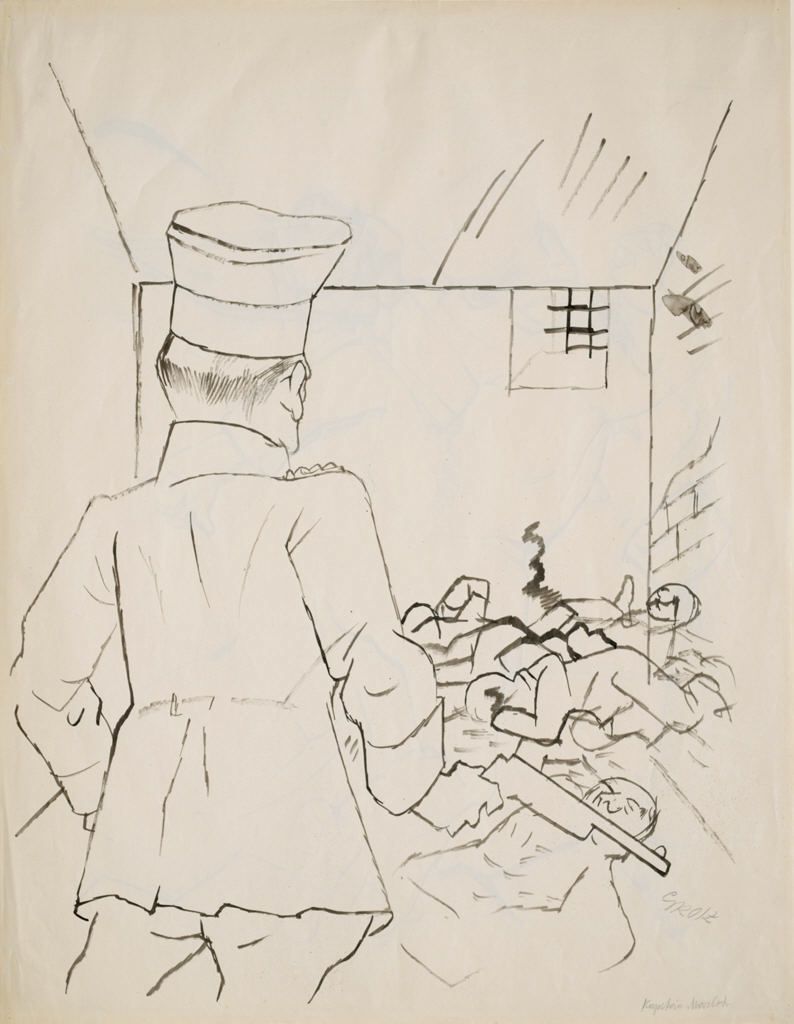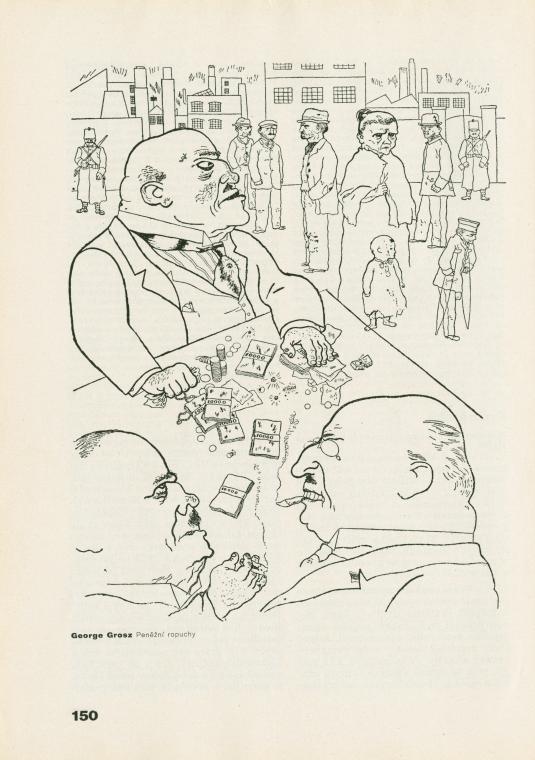
Circe: George Grosz, c.1925 (Hirshhorn Museum and Sculpture Garden, Smithsonian Institution, Washington, D.C.)
No period has ever been more hostile to art than the present one. And it is true to assert of the average person today that he could live without art. I do not want to explain what art is. The more or less clever interpretations of the most prominent authorities are familiar anyway. -- One thing is certain: the average person has a hunger for images. The need is satisfied as never before, but not by what we -- with our concepts from the empirical shopwindow -- tend to call art. Magazine photography and cinematography meet this need. -- The invention of photography was the dusk of art.
George Grosz (1893-1959): from G: Journal for Elemental Form-Creation, no. 3, June 1924
George Grosz (1893-1959): from G: Journal for Elemental Form-Creation, no. 3, June 1924

Promenade: George Grosz, 1923 (Hirshhorn Museum and Sculpture Garden, Smithsonian Institution, Washington, D.C.)
The path of least resistance
is a straight line
but once you deviate
even slightly
the path of least
resistance becomes
that of greater
and greater
deviation
TC: Wrong from the Start

The Lovesick Man: George Grosz, 1916 ((Kunstsammlung Nordrhein)

Cafe: George Grosz, 1915 (Hirshhorn Museum and Sculpture Garden, Smithsonian Institution, Washington, D.C.)


The Best Years of Their Lives: George Grosz, c. 1923 (Kunstmuseum Hannover)

Ausschweifung, Berlin Night Club: George Grosz, c. 1922 (private collection)

Twilight: George Grosz, 1922 (Museo Thyssen-Bornemisza, Madrid)

Study for the main figure in Twilight (verso): George Grosz, 1922 (Museo Thyssen-Bornemisza, Madrid)

The Eclipse of the Sun: George Grosz, 1926 (Heckscher Museum of Art, Huntington, New York)

The Pillars of Society: George Grosz, 1926 (Nationalgalerie, Berlin)

The Grey Day: George Grosz, 1921 (Staatliche Kunsthalle, Mannheim)

The End of the Road (Out of Fear of Starvation) [Das Ende des Weges (Aus Nahrungssorgen)]: George Grosz, 1917 (Museum of Modern Art, New York)

In Passing: George Grosz, 1921-1922 (Hirshhorn Museum and Sculpture Garden, Smithsonian Institution, Washington, D.C.)

Liquidation: George Grosz, 1918-1919 (Hirshhorn Museum and Sculpture Garden, Smithsonian Institution, Washington, D.C.)

For German Right and German Morals (Für Deutsches Recht und Deutsche Sitte): George Grosz, 1919 (Brooklyn Museum)

Kein Hahn kräht nach ihnen (Nobody Cares About Them): George Grosz, 1920 (Mildred Lane Kemper Art Museum, St. Louis)

The Celebration (Die Feier): George Grosz, c. 1921 (private collection)
Toads of Property (Die Besitzkröten): George Grosz, 1920 (New York Public Library Digital Gallery)

Man With Wheelbarrow (Mann Mit Wheelbarrow): George Grosz, 1920 (Hirshhorn Museum and Sculpture Garden, Smithsonian Institution, Washington, D.C.)
From the beginning, the models he looked to were not the plaster casts of antique sculptures he was forced to draw when he studied in Dresden and Berlin; they were, rather, taken from the realm of popular imagery. The figures he admired were not the heroes of antiquity and history but those of dime novels. Grosz studied and collected children’s drawings and toilet graffiti. He was fascinated by garish pictures of horrifying atrocities and catastrophes of the sort displayed at carnivals and riflemen’s gatherings, and he loved the lurid illustrations in western novels and detective stories. And of course he knew the great caricaturists of the past: William Hogarth, whom he explicitly names as a model, Honoré Daumier, Wilhelm Busch. Over the years he extracted from these widely divergent sources a unique and characteristic drawing style. With this style, he prowled the metropolis, studying its marginal districts, circling around such subjects as crime, nightclubs, bordellos. He was fascinated by the lower depths of society and of people.
-- Matthias Eberle
-- Matthias Eberle


No comments:
Post a Comment